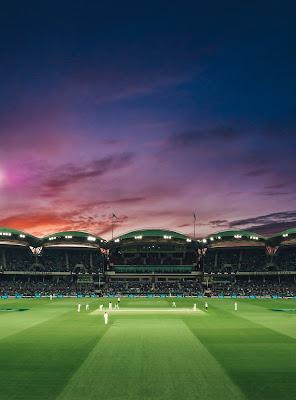Its been a roller coaster ride the past few months but completing my MBA and watching India win the cricket world cup were definitely the highs in this otherwise dull period of my life. Yes my dear netizens no prizes for guessing the topic for the next two entries would be the recently concluded cricket world cup.
The first time I saw a cricket world cup match was in 1992 when the tournament was hosted by Australia. The 1992 world cup was a revelation and included many firsts such as coloured clothing, floodlit matches and more importantly it was the first time the two group format was discarded with South Africa joining the competition as the ninth team. Since 1992 the format of the tournament has never been the same and has consistently gone through major upheavals. We saw the introduction of quarterfinals in 1996, the super sixes in 1999 (2003 tournament followed the 1999 format with 14 teams competing) and super eights in 2007 (with 16 teams competing). The recently concluded tournament in 2011 (which followed the 1996 format) had 14 teams slugging out in groups of two and had 8 teams making it to the knockouts. At the time of writing this blog International Cricket Council (ICC) has caused a major furore by restricting the number of competing teams to 10 in the next world cup. That brings us to the following million dollar questions why does ICC insist on changing the world cup format for every edition? Why don’t cricket world cups follow the soccer world cups’ format where the league phase just doesn’t serve the purpose of getting the top teams to the knockout stages?
 |
| Cricket: The way we would like to see it <Courtesy: Marcus Wallis> |
There could be many answers but being a MBA graduate it’s tough to ignore the marketing problem lurking beneath the veil. Cricket like any sport generates a majority of its revenues from broadcasters (who in turn generate revenue from ads). Ads are one of the biggest sources of revenue for the broadcasters and a huge portion of the ad slots are sold prior to the tournament with the broadcaster retaining a small portion (ad inventory -> almost 20%) to sell at a later date (later stages of the competition) for higher prices. A one day cricket match’s structure makes it conducive to show ads almost after every four minutes (four minutes =one over). I wouldn’t be exaggerating when I say there could be more than two hours of commercials in a six – seven hour one day match (the viewing time could go up to eight – nine hours if the presentation ceremony, pre-match and post match analysis are considered). The ad rates for the India-Pakistan match in the 2011 tournament were in the range of Rs 54 lakh for a 30 second slot (appox $120,000, the Super Bowl 2011 in comparison charged $3.5 million for a 30 second spot). While the figures pale in comparison to the Super Bowl, the numbers are still high when you consider the ad time that you have during a cricket match and also the number of times that the commercial needs to be repeated during a seven hour match in order to catch the attention of the viewer. Therefore here are certain most important considerations which need to be taken into account if the ad revenues have to be maximized:
1. The bigger the match the higher the revenues. It is easier for the broadcasters to sell the ad inventory for a high profile match between evenly matched teams than for a contest which pits the heavyweights against minnows.
2. The second and the most important consideration is that countries which attract the maximum viewership such as India and Pakistan (two of the largest countries which play cricket in terms of population ->almost 1.5 billion viewers) need to make it to the later stages of a tournament so that interest of the larger viewing public is sustained (and more importantly the ad inventories could be sold). Remember the financial disasters that 2007 World Cup and 2006 Champions trophy were when both these teams crashed out of the tournament early.
The second consideration could be met if the format of the tournament is devised in a way that allows India and Pakistan to play the maximum number of matches before being eliminated. The 2011 world cup took this aspect into consideration and created a lengthy league phase which ensured that each of the above teams played at least six matches before making it to the knockouts. The 2015 world cup is going one step further and meeting both of the above considerations (Note: The format is currently under discussion and can change in the future). It has restricted the number of playing teams to 10 thereby eliminating the weaker associate teams (countries where cricket is still not a major sport) and a ten team round robin format would ensure that teams play at least nine matches before the semi finals.
In conclusion a knockout tournament would never work for a game like cricket (at least in the foreseeable future) because the way the pitch behaves on that day could end up invariably upsetting the favorites and also turning away a majority of the cricket viewing audience (from the subcontinent). ICC tried the knockout format with the Champions trophy (for two editions) but soon reverted to the time tested league and knock out formula in order to maximize its revenues. There will be many more considerations in the future but the biggest consideration of them all would be to ensure that countries with maximum viewership play the maximum number of matches before the knockouts in the tournament. The rest as they is dependent upon “form”.
Until Next time,
J.J. Chaitanya
Comments
Post a Comment